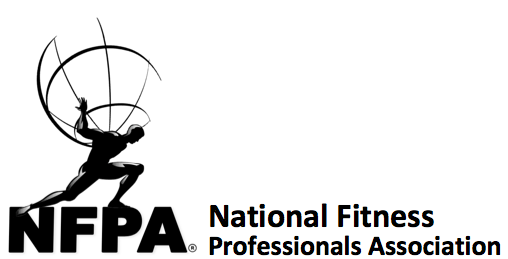bodyweight training unleashed
innovative calisthenics progressions
In recent years, bodyweight training has gained immense popularity due to its accessibility, effectiveness, and ability to develop strength and mobility without requiring gym equipment. Calisthenics, a form of bodyweight exercise, focuses on controlled movements that utilize one's own body weight to build strength, flexibility, and endurance. From elite athletes to fitness enthusiasts, calisthenics has become a transformative training method that fosters impressive physical capabilities. This article explores the benefits of bodyweight training, the scientific principles behind calisthenics, potential risks, and innovative progressions that can take your training to the next level. Additionally, a sample weekly workout regimen will be provided to help you incorporate calisthenics into your routine effectively.
The Benefits of Calisthenics Training
Functional Strength Development – Unlike traditional weight training, calisthenics exercises mimic natural movement patterns, improving coordination, agility, and overall athleticism.
Enhanced Mobility and Flexibility – Many calisthenics movements require full-body activation, promoting better joint mobility and flexibility over time.
Scalability and Progression – Whether you’re a beginner or an advanced athlete, calisthenics provides endless progression opportunities, from basic push-ups to one-arm pull-ups and planches.
Minimal Equipment and Accessibility – No gym? No problem. Calisthenics can be performed anywhere, making it a convenient and cost-effective training option.
Improved Body Awareness and Control – Training with bodyweight exercises enhances proprioception and neuromuscular coordination, translating to better overall movement efficiency.
Cardiovascular and Muscular Endurance – High-repetition bodyweight exercises, such as burpees and jump squats, can elevate heart rate and improve muscular stamina.
The Science Behind Calisthenics Training
Calisthenics training is deeply rooted in biomechanics, motor control, and strength adaptation principles. Progressive overload, a fundamental concept in strength training, can be achieved through increased repetitions, longer time under tension, or advanced movement variations. Additionally, studies show that calisthenics promotes greater muscle activation due to the need for stabilization, particularly in compound movements such as dips, handstands, and muscle-ups. Moreover, bodyweight training enhances tendon and ligament health, reducing the risk of injury compared to traditional weightlifting.
Potential Risks and How to Avoid Them
Despite its advantages, improper execution of calisthenics exercises can lead to injuries. Here are common risks and how to prevent them:
Joint Strain – Gradually progress through exercises to avoid placing excessive stress on the wrists, elbows, and shoulders.
Overuse Injuries – Incorporate adequate rest and mobility work to prevent repetitive stress injuries.
Lack of Proper Form – Focus on technique before increasing intensity or difficulty.
Muscle Imbalances – Balance pushing and pulling exercises to prevent muscular asymmetry.
Innovative Calisthenics Progressions
To maximize the benefits of calisthenics, it’s crucial to implement progressive training methods. Here are some innovative progressions:
Upper Body Progressions
Push-Ups → Archer Push-Ups → One-Arm Push-Ups → Planche Push-Ups
Pull-Ups → Archer Pull-Ups → One-Arm Pull-Ups → Muscle-Ups
Dips → Korean Dips → Straight Bar Dips → Weighted Dips
Lower Body Progressions
Squats → Bulgarian Split Squats → Shrimp Squats → Pistol Squats
Lunges → Jumping Lunges → Skater Squats → Explosive Pistol Squats
Glute Bridges → Single-Leg Bridges → Nordic Hamstring Curls
Core Progressions
Planks → Side Planks → Dragon Flags → Front Levers
Leg Raises → Hanging Knee Raises → Toes-to-Bar → Windshield Wipers
Sit-Ups → Hanging Sit-Ups → L-Sit Hold → V-Sit Hold
Sample Weekly Calisthenics Workout Routine
Day 1: Strength Focus
Push-Ups (3 x 12)
Pull-Ups (3 x 8)
Dips (3 x 10)
Bulgarian Split Squats (3 x 10/leg)
Hanging Leg Raises (3 x 12)
Day 2: Endurance & Mobility
Jump Squats (3 x 15)
Archer Push-Ups (3 x 10)
Skater Lunges (3 x 12)
Side Planks (3 x 30 sec)
Active Shoulder Mobility Drills
Day 3: Rest or Active Recovery
Light stretching and mobility work
Low-intensity cardio (e.g., walking, cycling)
Day 4: Power & Explosiveness
Plyometric Push-Ups (3 x 10)
Muscle-Up Progression (3 x 5)
Explosive Pistol Squats (3 x 6/leg)
Hanging Windshield Wipers (3 x 8)
Broad Jumps (3 x 10)
Day 5: Static Strength & Balance
Handstand Hold (3 x 30 sec)
L-Sit Hold (3 x 20 sec)
Front Lever Progression (3 x 5)
Nordic Hamstring Curls (3 x 8)
Planche Lean (3 x 15 sec)
Day 6 & 7: Rest or Active Recovery
Yoga or stretching routine
Light bodyweight drills
Conclusion
Calisthenics is a powerful training modality that fosters functional strength, mobility, and endurance. Whether you're a beginner or an advanced athlete, implementing structured progressions and focusing on proper technique will lead to long-term improvements. By incorporating innovative progressions and a balanced weekly routine, you can push the limits of your bodyweight training and unlock new levels of strength and control. Start your calisthenics journey today and experience the freedom of training anytime, anywhere!

